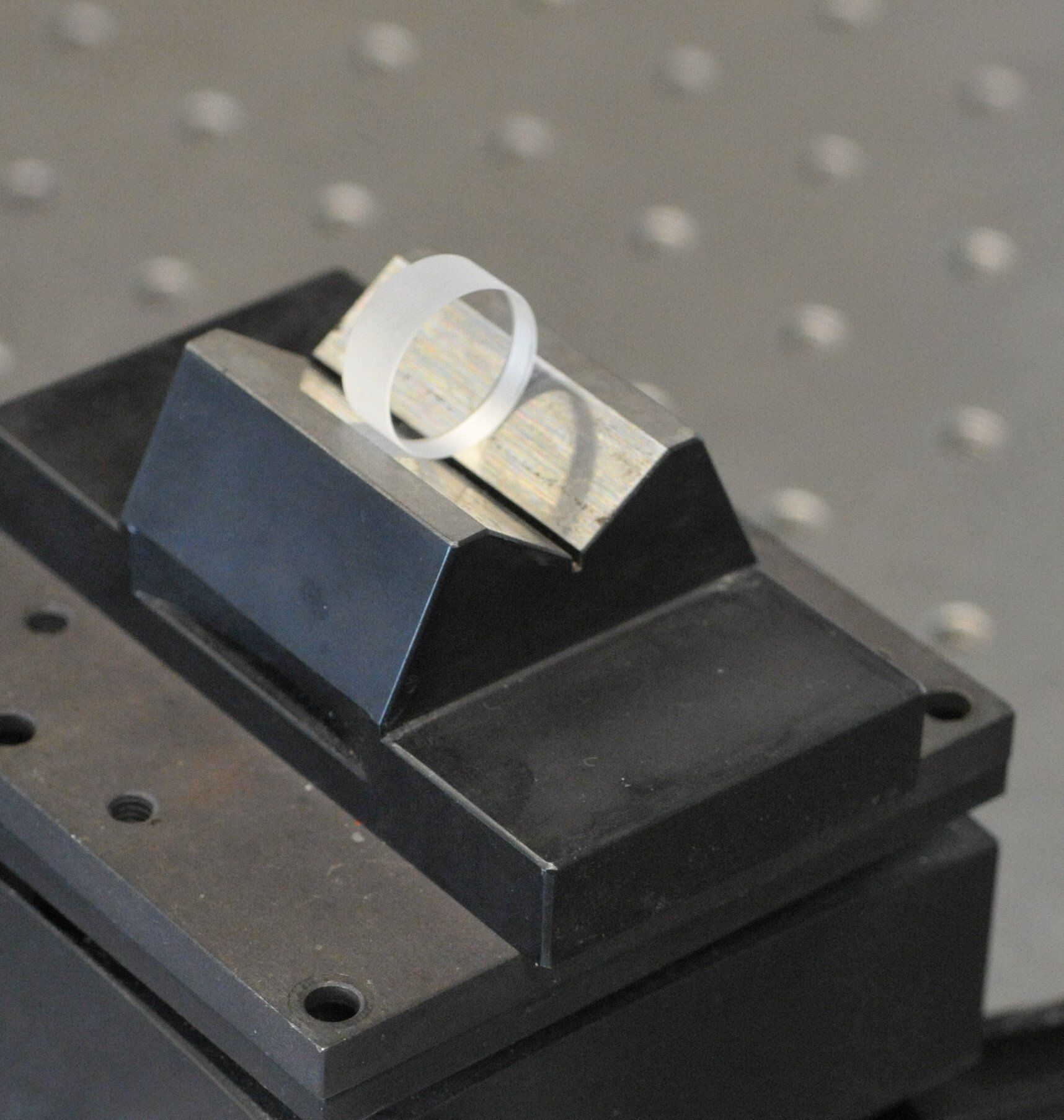Detailed information
Standing Wave
Interference pattern standing wave
The picture shows the interference pattern of a standing wave. A plan-parallel glass plate with a thin light-scattering film is inserted into the standing wave and intersects the planes of intensity maxima and minima, also called nodes and antinodes. The interference phenomenon of the standing wave is so far little considered.
At the Institute of Process Measurement and Sensor Technology at the Technische Universität Ilmenau, in cooperation with SIOS Meßtechnik GmbH, research has been conducted for several years on the application of standing wave interference in practice. The advantage of the standing wave interference compared to the Michelson concept is the compactness of the interferometer. While the interferometers based on the principle of beam splitting and beam reunification requires an axis-cross with four arms, the standing wave needs only one axis. For automatic fringe counting, the interference pattern must be scanned photoelectrically. For photoelectric scanning of the intensity profile of a standing wave, a new type of photosensor is necessary. The photosensor must be partially transparent and very thin.
Several research projects have been conducted in the past to develop a transparent photosensor [1,2]. The sensor was designed as a silicon photodiode. In both projects the forward-backward counting of the interference fringes could be demonstrated. An additional research project is currently underway, which aims to further develop the previous projects [3].
We think the standing wave has the potential to find original applications in the field of interferometric length measurement in the future.
[1] H.-J. Büchner, H. Stiebig, V. Mandryka, E. Bunte, G. Jäger: An optical standing-wave interferometer for displacement measurements Meas. Sci. Technol. 14 (2003) 311-316
[2] I.Ortlepp: Mikrointerferometer auf Basis von interferenzoptischen Stehende-Welle-Sensoren Diss. TU Ilmenau (2020)





